|
The doors and partition panels that allow movement between spaces of Japanese traditional-style buildings are called tategu. They are parts of the buildings that are in constant use, day after day, year after year. The fittings of cultural properties such as shrines and temples continue to function even after hundreds of years. What are the secrets of their durability? |
|
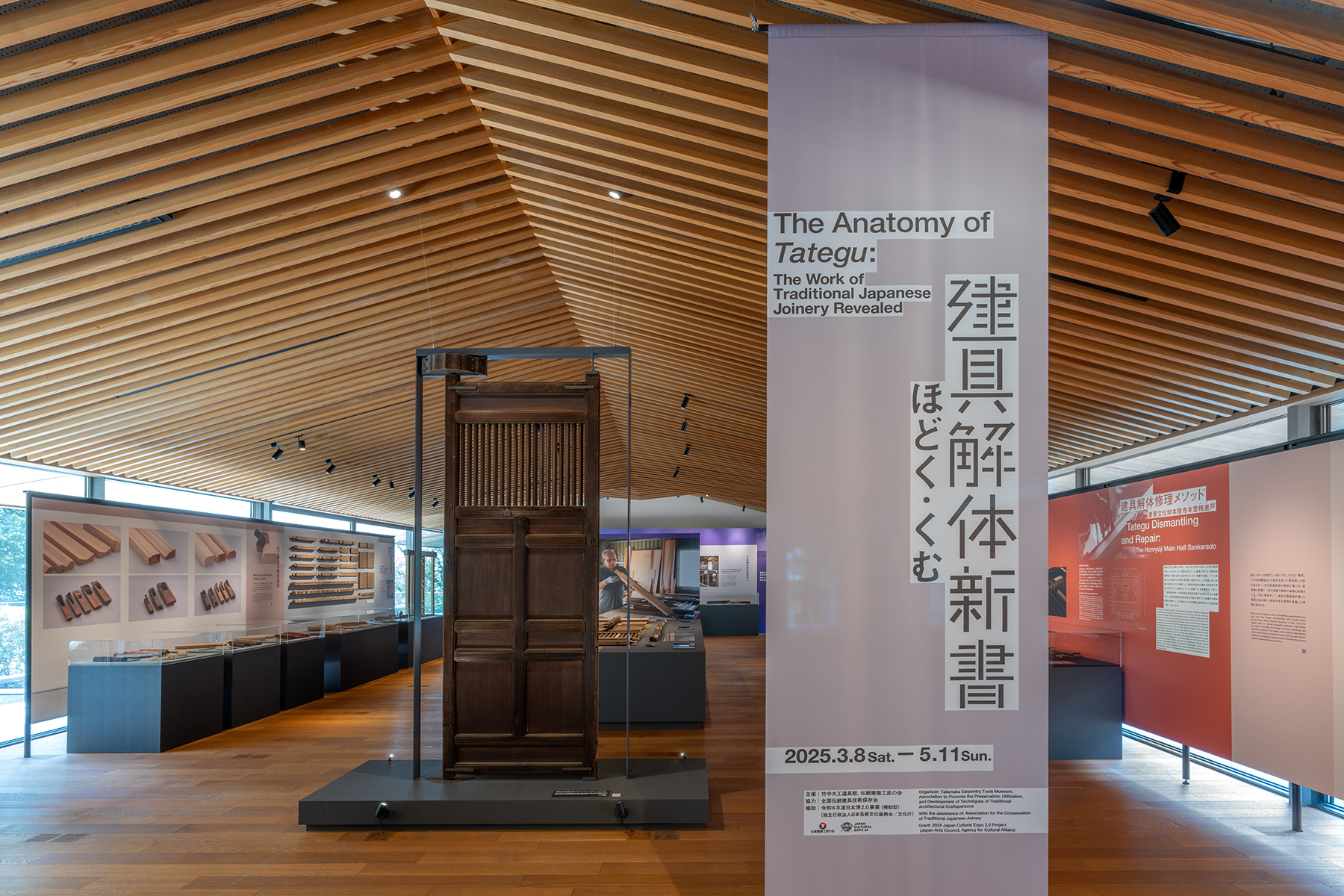 The venue is 1F Hall in Takenaka Carpentry Tools Museum. The exhibition space has been relaxed so that you can see a lot of techniques hidden in the details of traditional fittings. In this exhibition, in addition to explanations in Japanese and English, we also provide explanations of multilingual languages (i.e., Simplified, Traditional, Français, Deutsch) using QR code reading (Japan Expo 2.0 Subsidized by Project). |
|
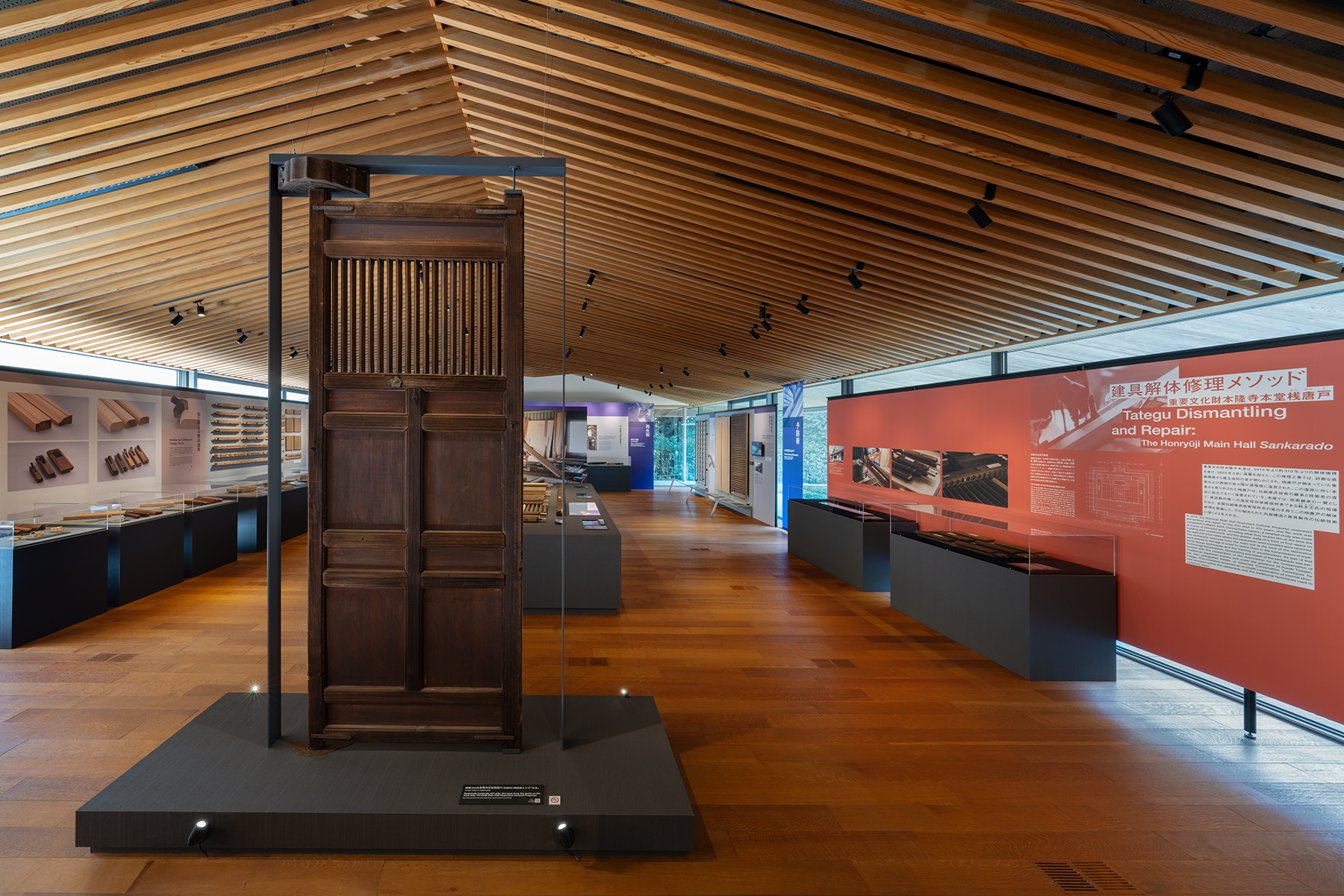 At the venue, you will be greeted by Sankarado, a height of about 2.8m. It is a door that was actually used in important cultural properties. A door that has protected the temple while being exposed to the wind and rain for more than 300 years. If you look at the door and think about its long history, you may be intrigued by its deep charm. Please enjoy the rare experience of staring only at the door at the venue. |
|
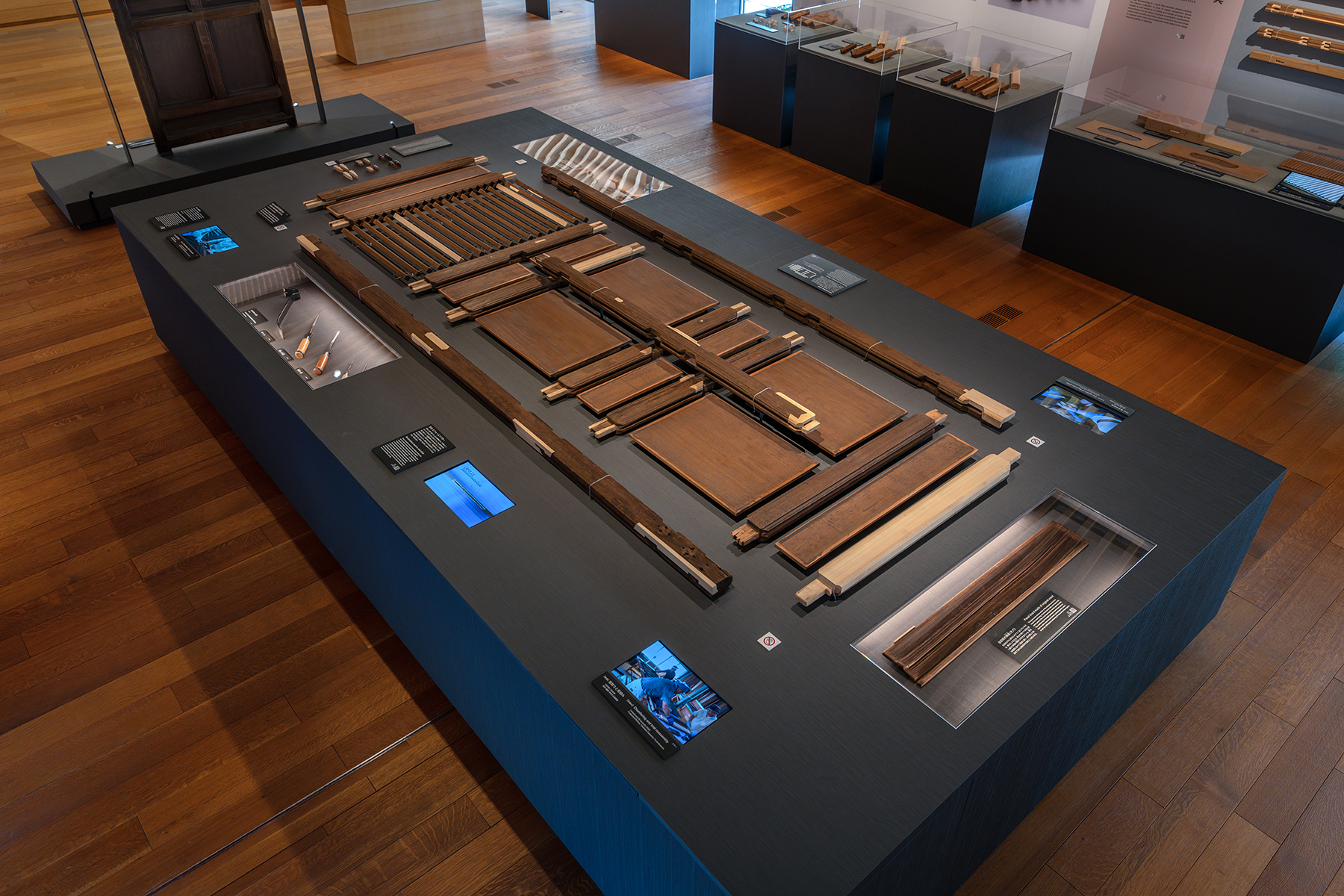 In the center of the venue, the door was "disassembled" as shown in the exhibition title on a huge table of 4.6m x 2.4m. The pier in front of the venue is a simple door, but it is actually composed of 40 members. |
|
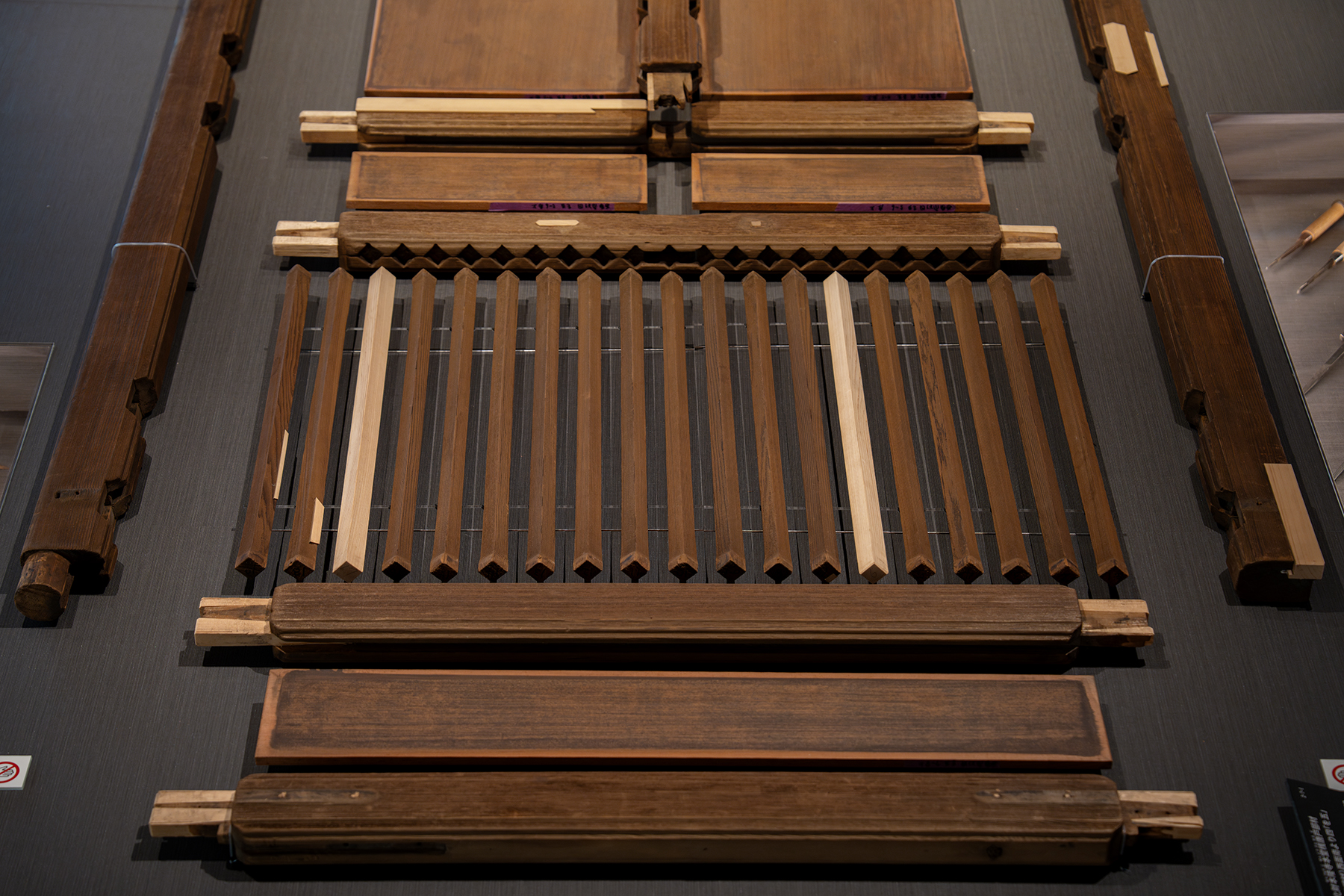 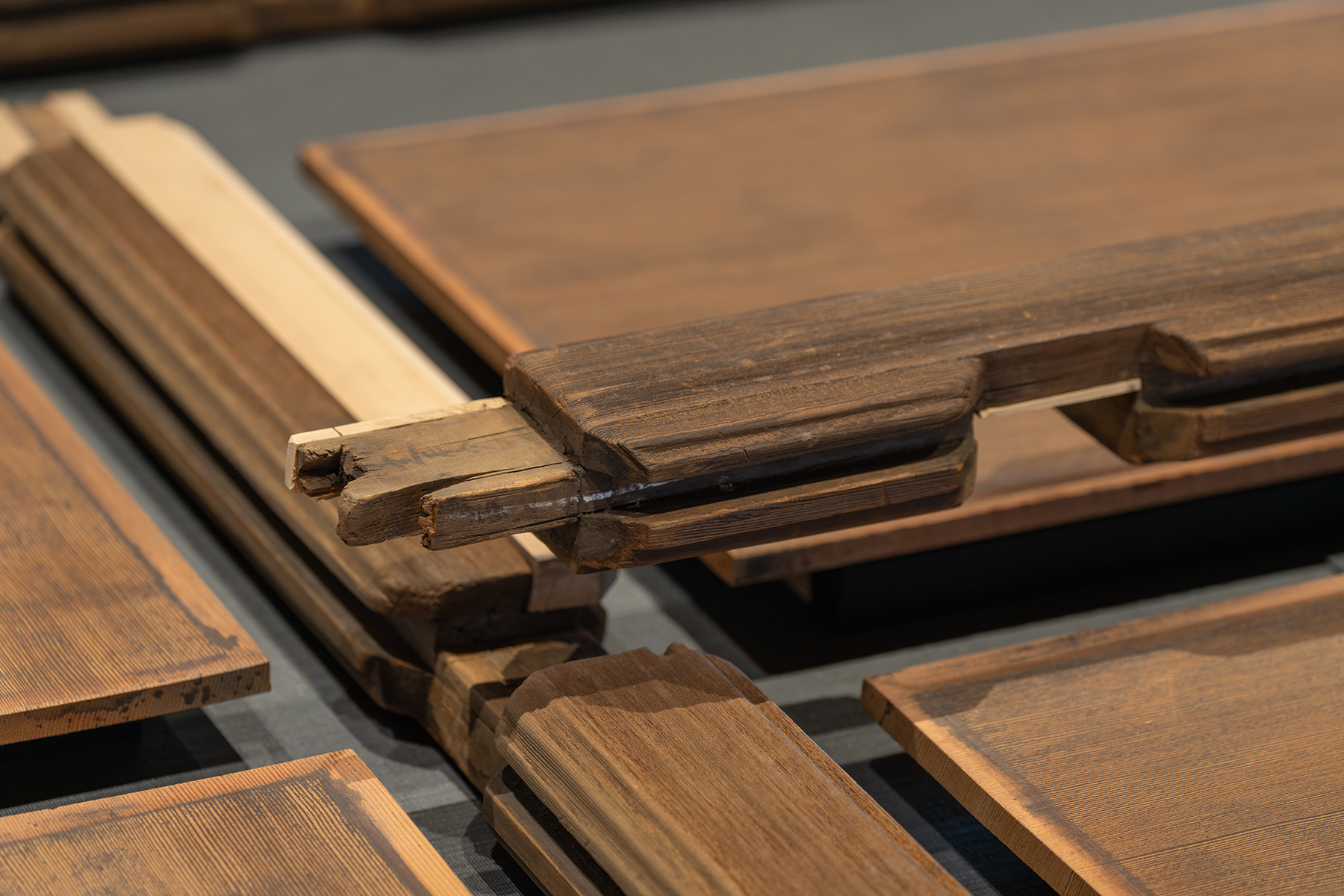 In the actual repair, it is finished in an old color (Koshoku) so that you do not know where the repair was repaired, but this time we are exhibiting specially with the repair location known. In addition to the actual dismantling and repair videos taken through close interviews, you can see the internal structure of fittings and the elaborate repair techniques from multiple directions. |
|
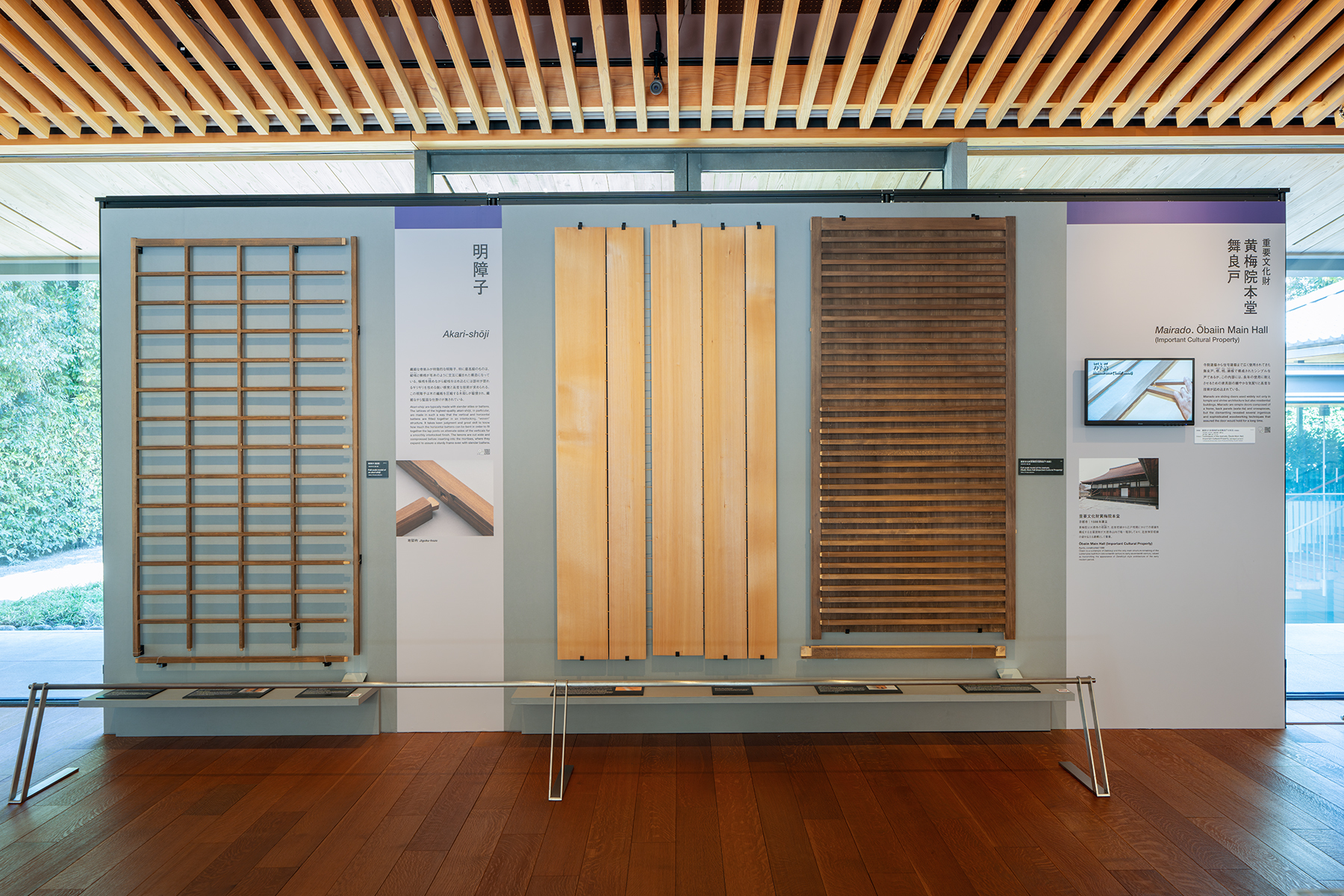 Masaru Suzuki, a fittinger who has been involved in the restoration of fittings for national treasures and important cultural properties for more than 70 years, introduces Mairado and Akari shoji, where the highest technology is used among the fittings I have encountered so far. You can see secret techniques that only the fittings who were responsible for the production can know. |
|
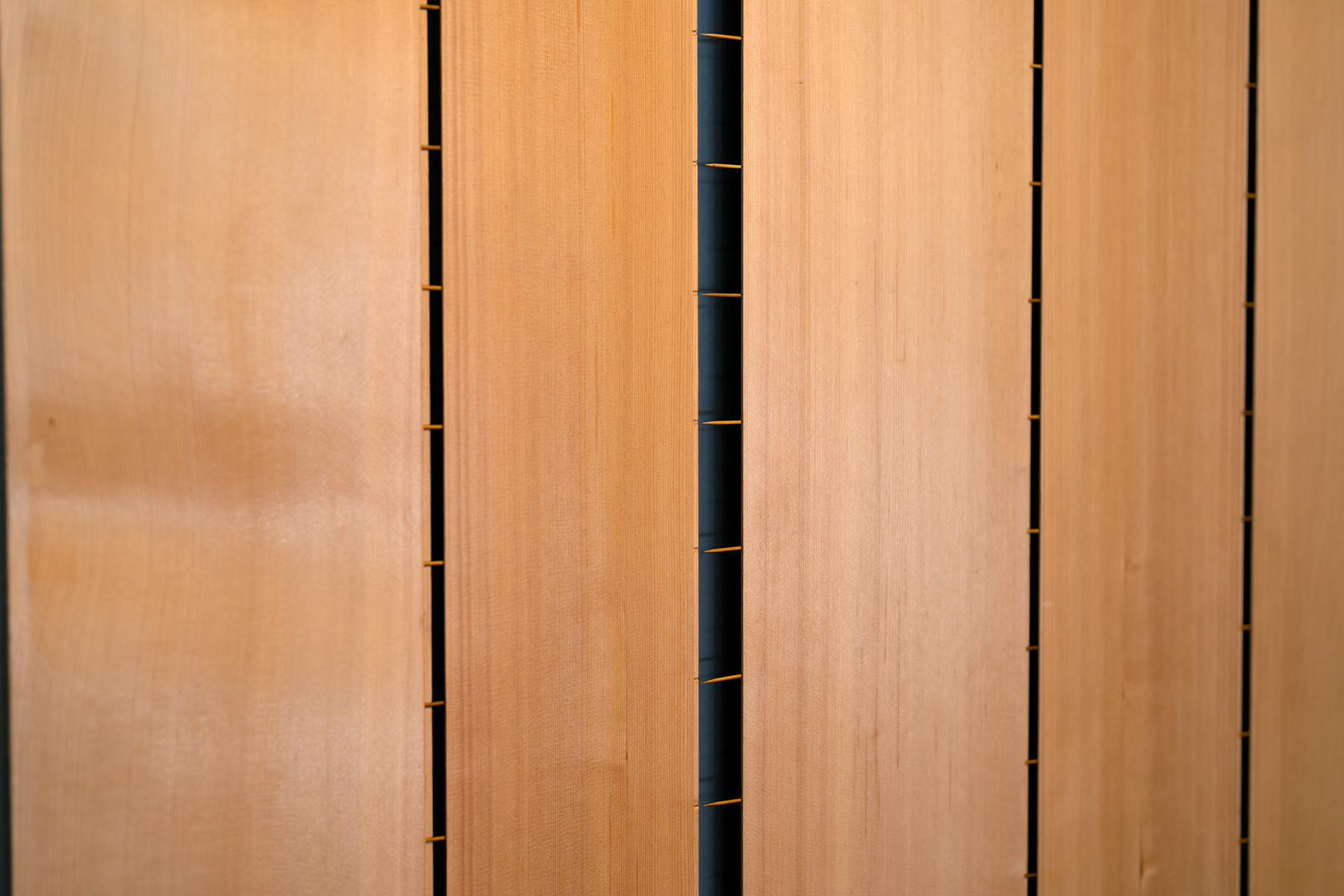 A bamboo nail with a diameter of 3 mm is installed on a board with a thickness of 6 mm, and measures have been taken to prevent distortion or warpage of fittings. Distortion can not only cause inconvenience to daily use, but also damage important paintings on sliding-door panel on the back of the door. You can feel the beauty of the craftsman's soul, who does your best in the invisible place. |
|
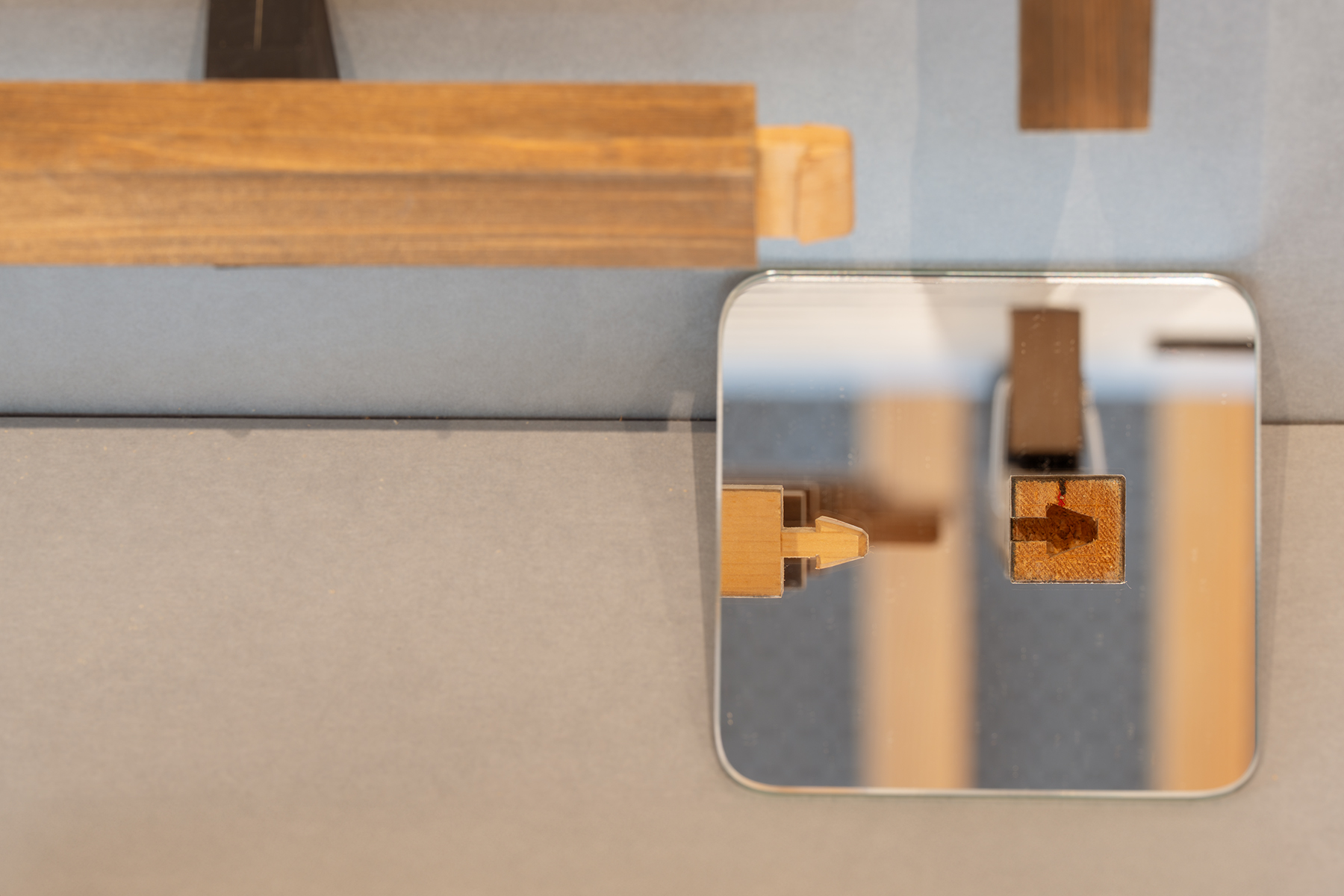 There is a mirror at the bottom of the door. Take a look at the elaborately carved hozo hole. |
|
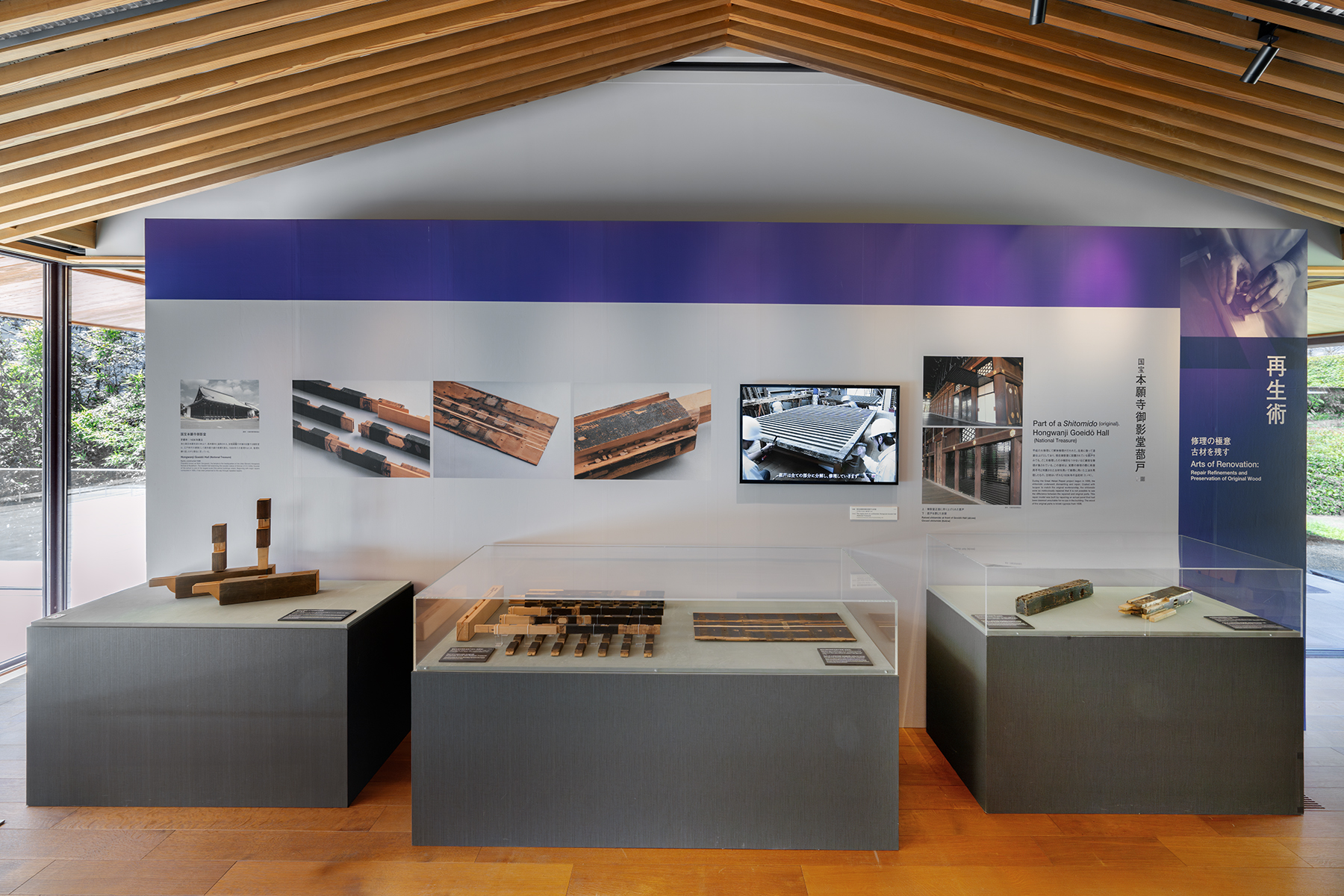 The original material (1636) of the shitomi door of Honganji Mieido is on display. You can see the fitting repair technique up close along with the actual repair videos performed over 10 years from 1999. |
|
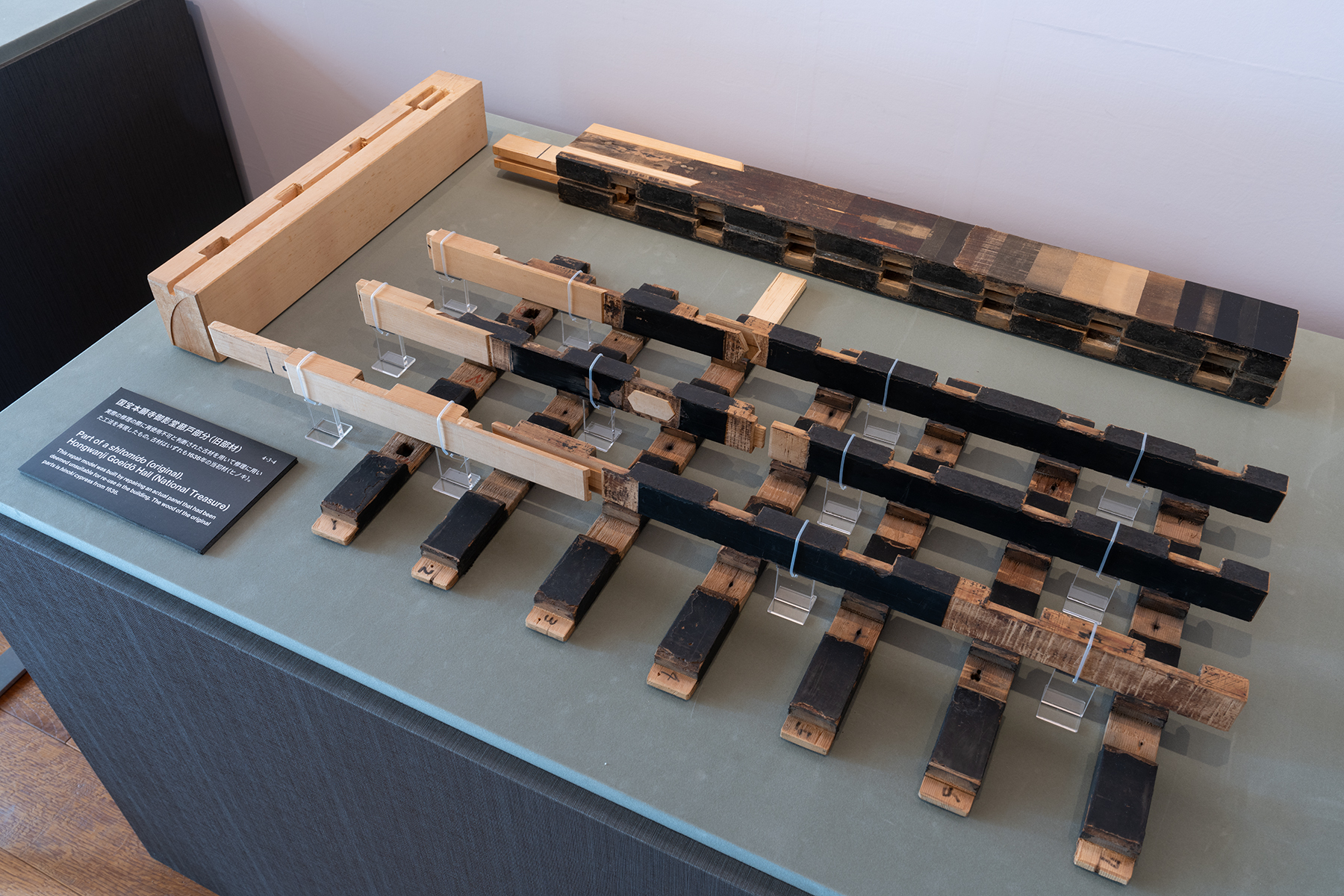 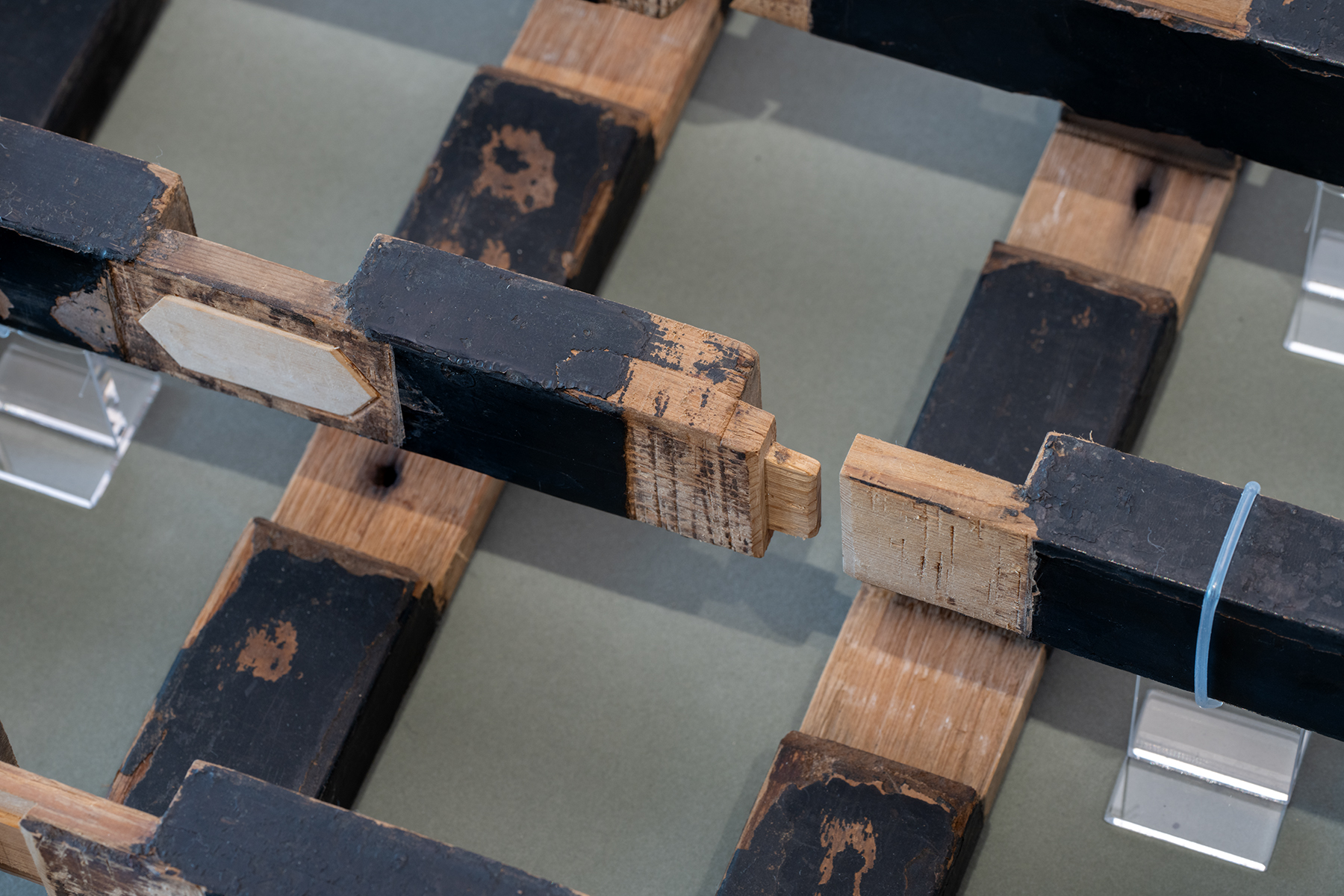 From the traces of each delicate repair that does not leave the details, the passion of protecting the original material and passing it on to future generations is transmitted. |
|
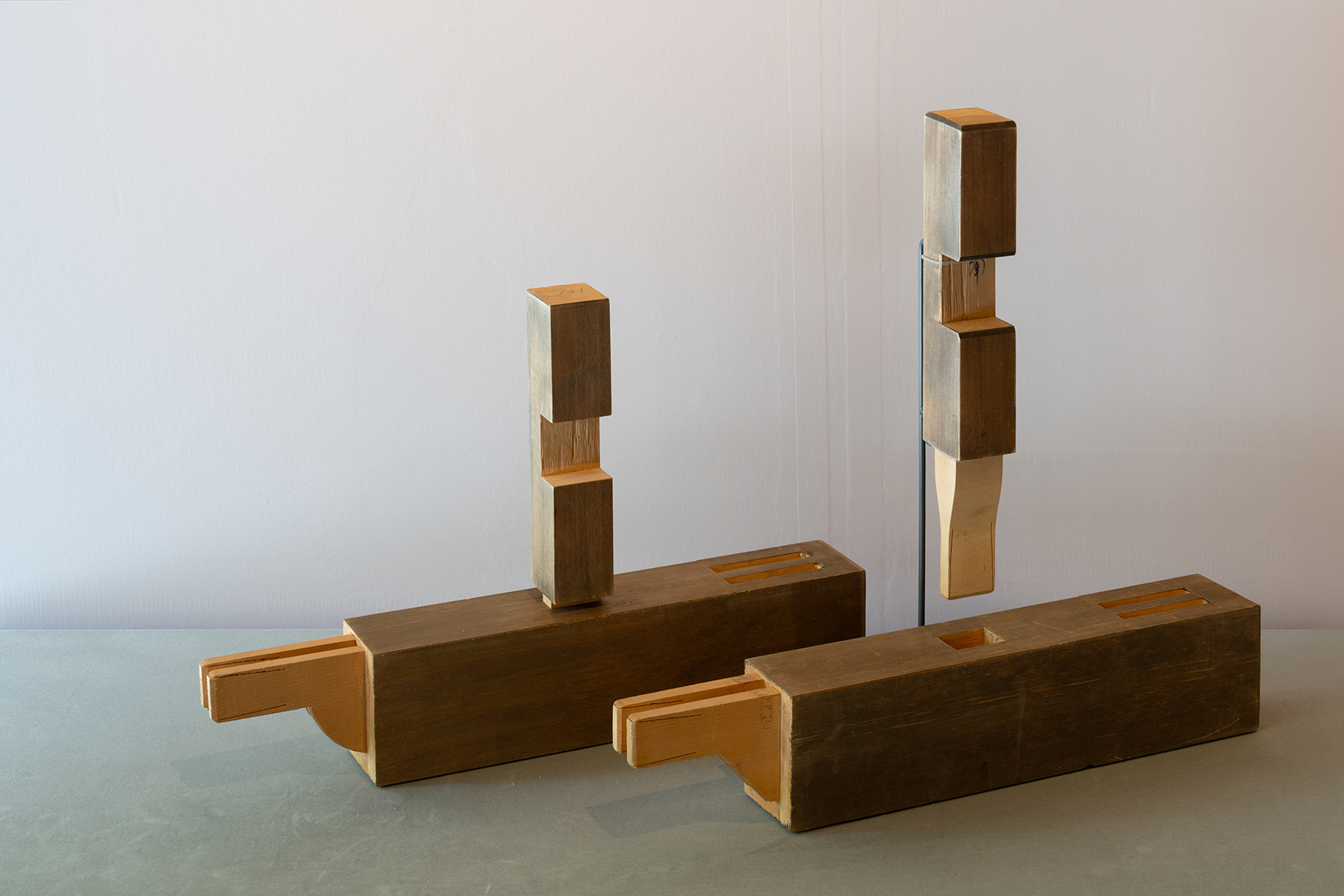 This is a restored model of the gesture discovered from Shitomido in the early Edo period. Even the fittings of the same building are concealed in various forms when dismantled. I am surprised that the curve is hidden in the fittings made up of vertical intersections. Think of the user, Venue, and work hard on invisible parts to make it durable. It is a gem that gives a glimpse of the relationship between the owner and the craftsman. |
|
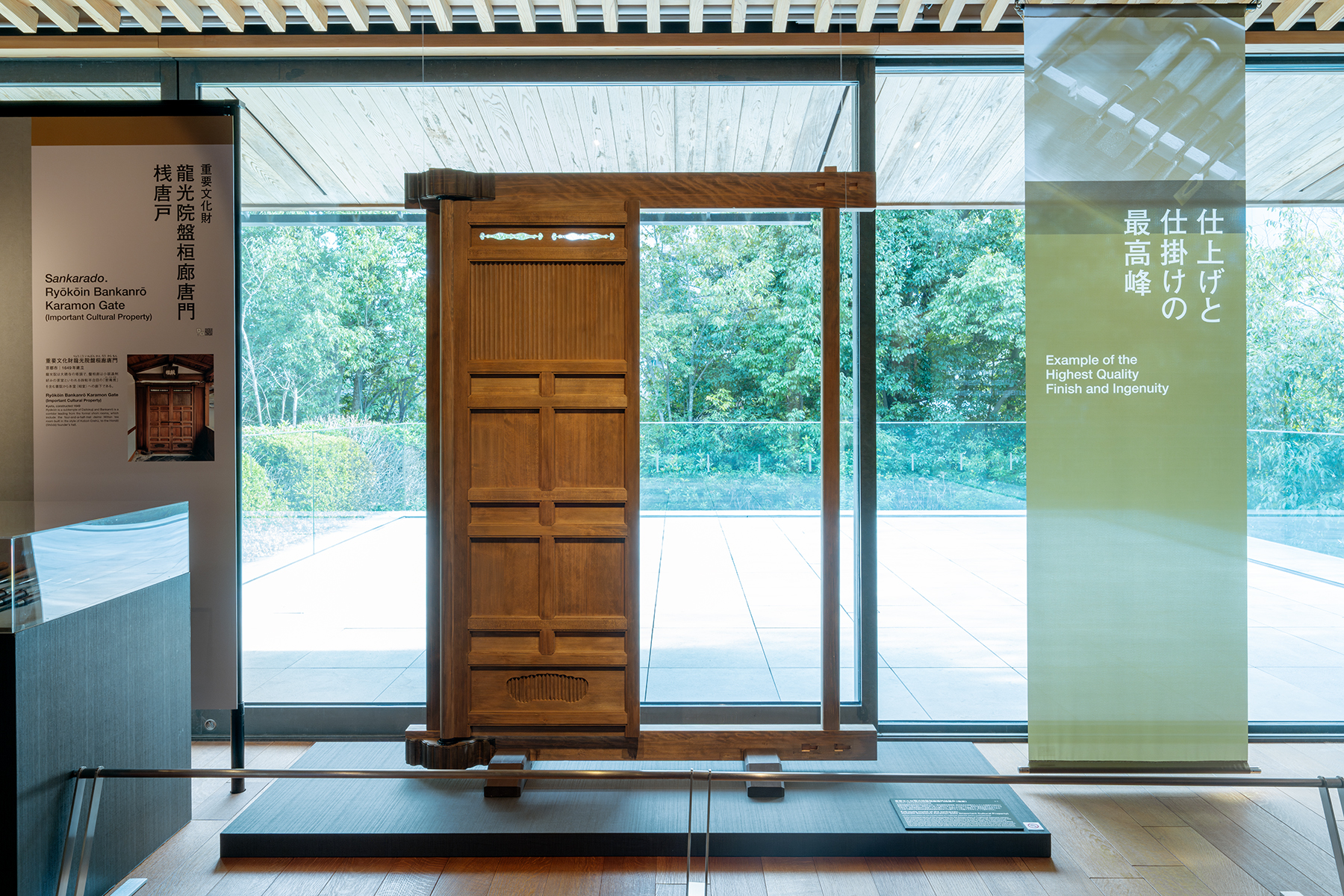 This pier Karato (recovery) uses the most difficult technology among the fittings that Mr. Tadashi Suzuki met. |
|
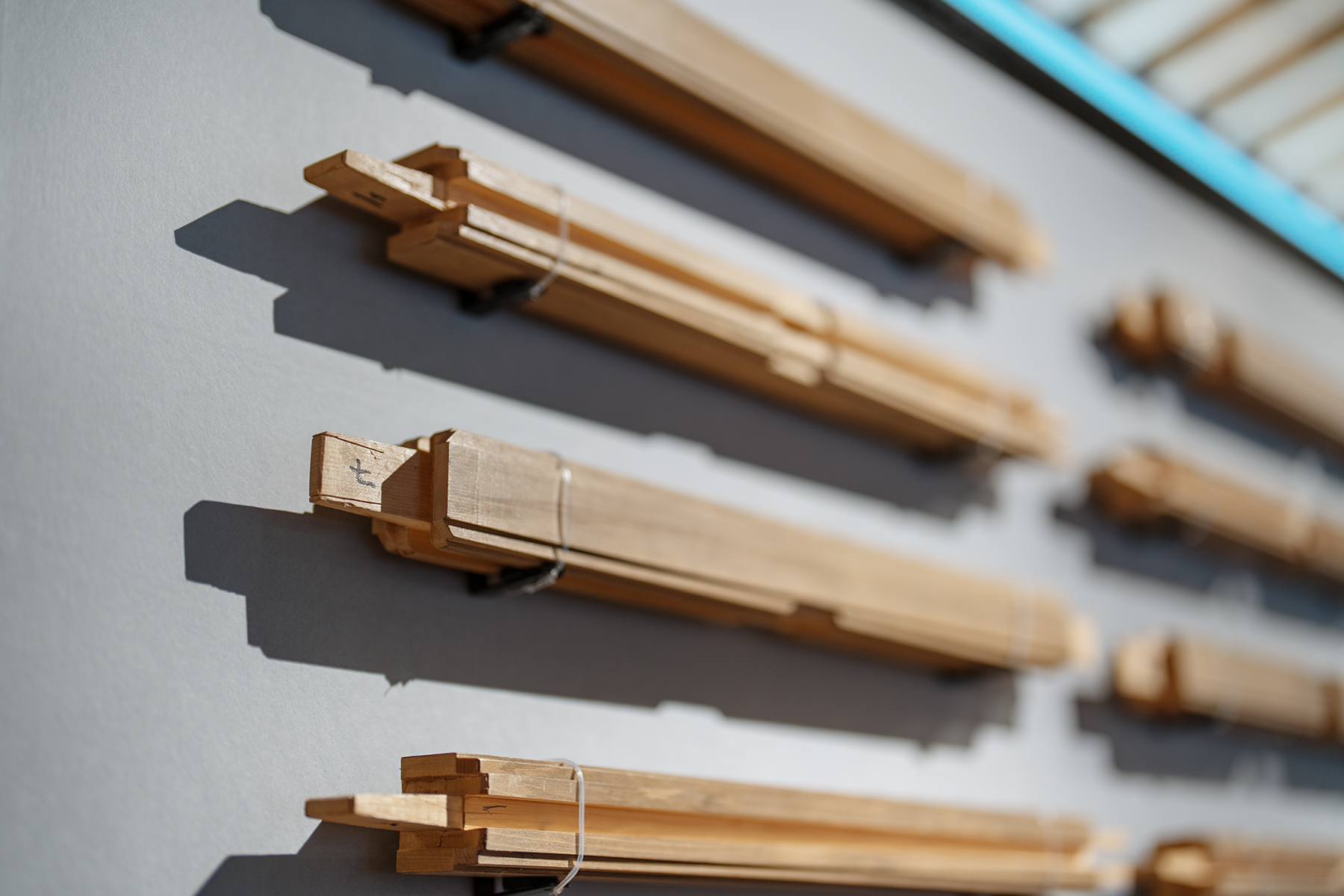 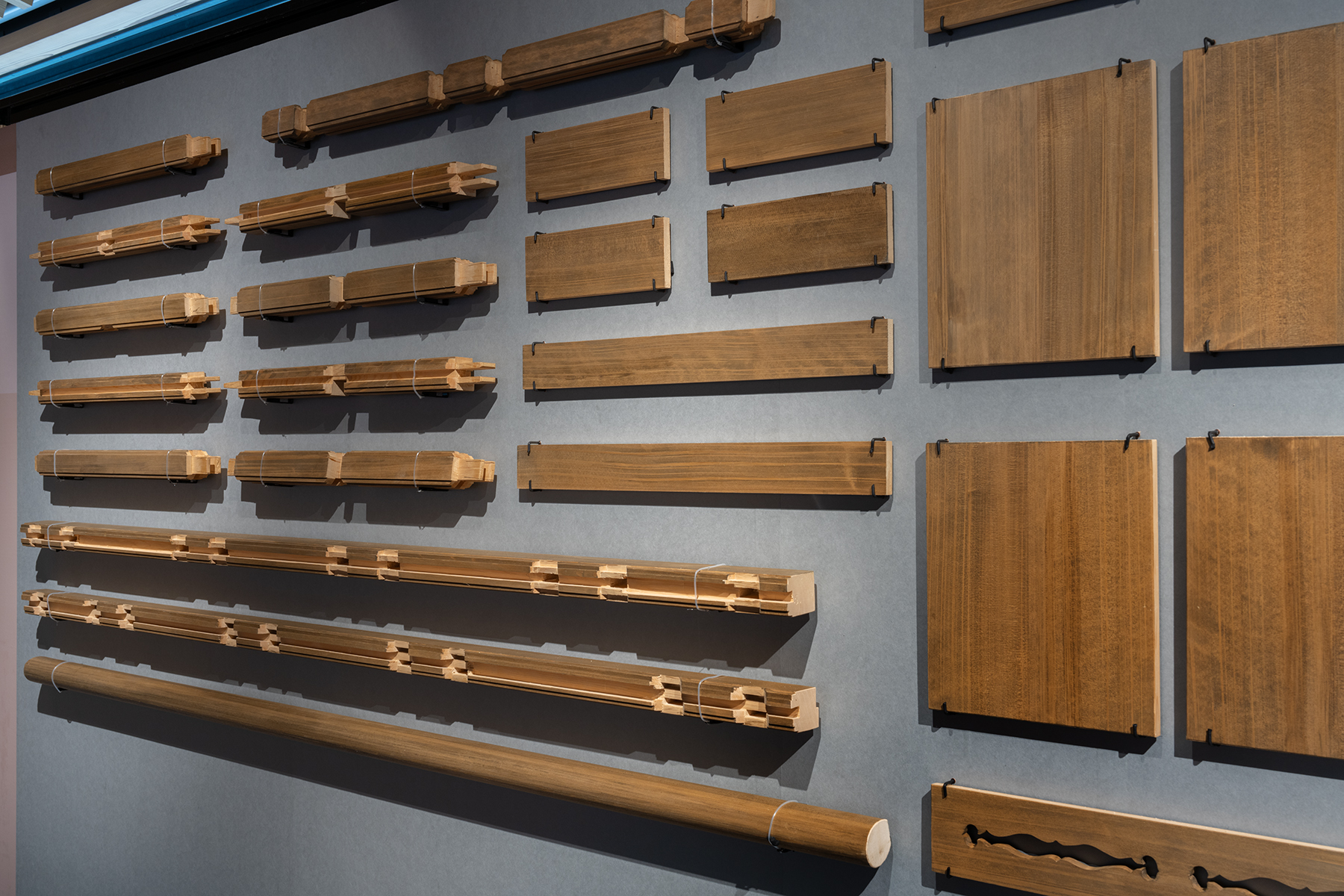 When this karato is dismantled, a complex gesture that cannot be imagined from the clean fittings placed in the building will appear. To withstand hundreds of years of use, it is a completed form created by past fittings, one shape of a hozo, one width of a small hole, and one completed form that was thought out by past fittings. |
|
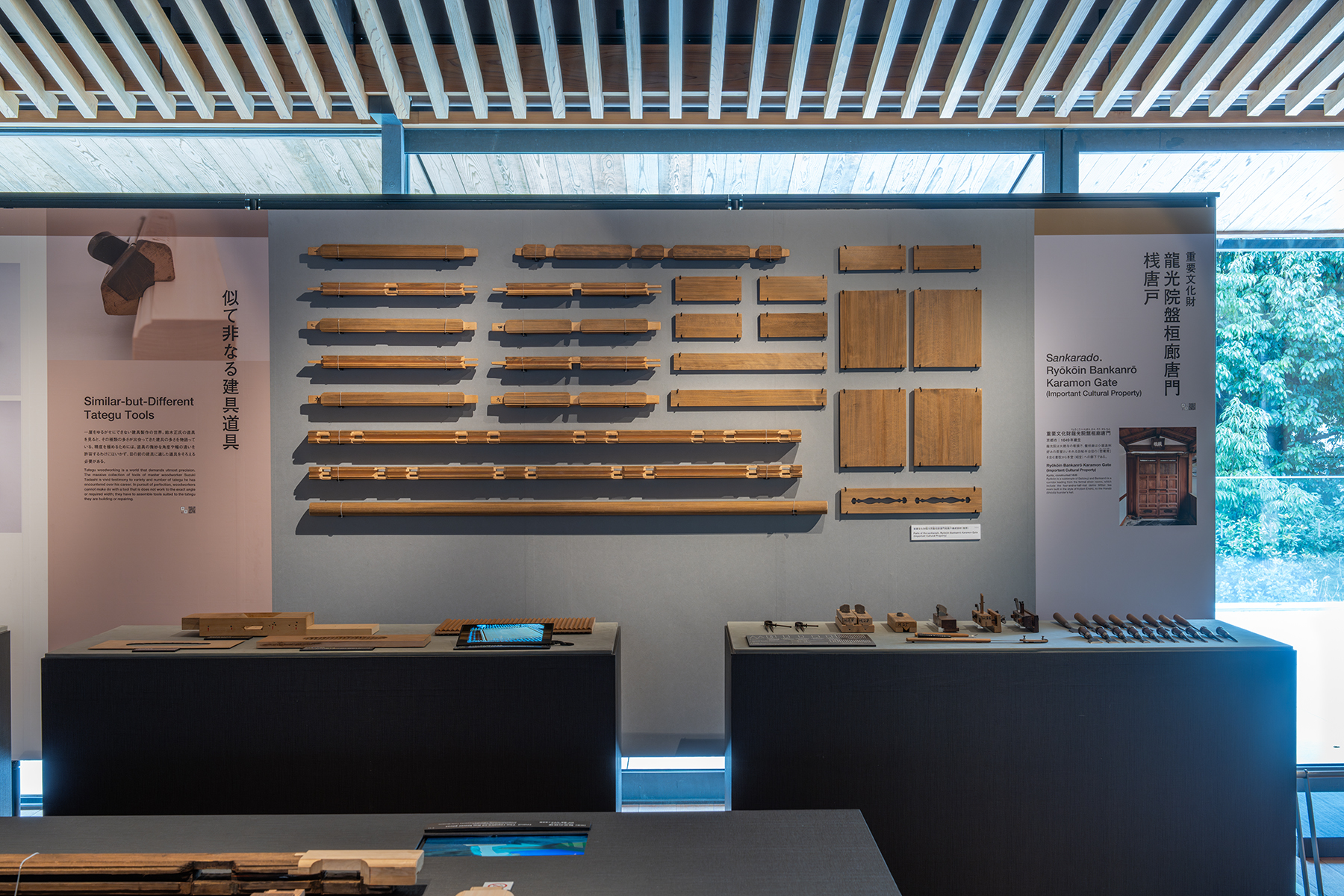 You can see the handcrafts that have been handed down along with the tools and work images used for the restoration model production. |
|
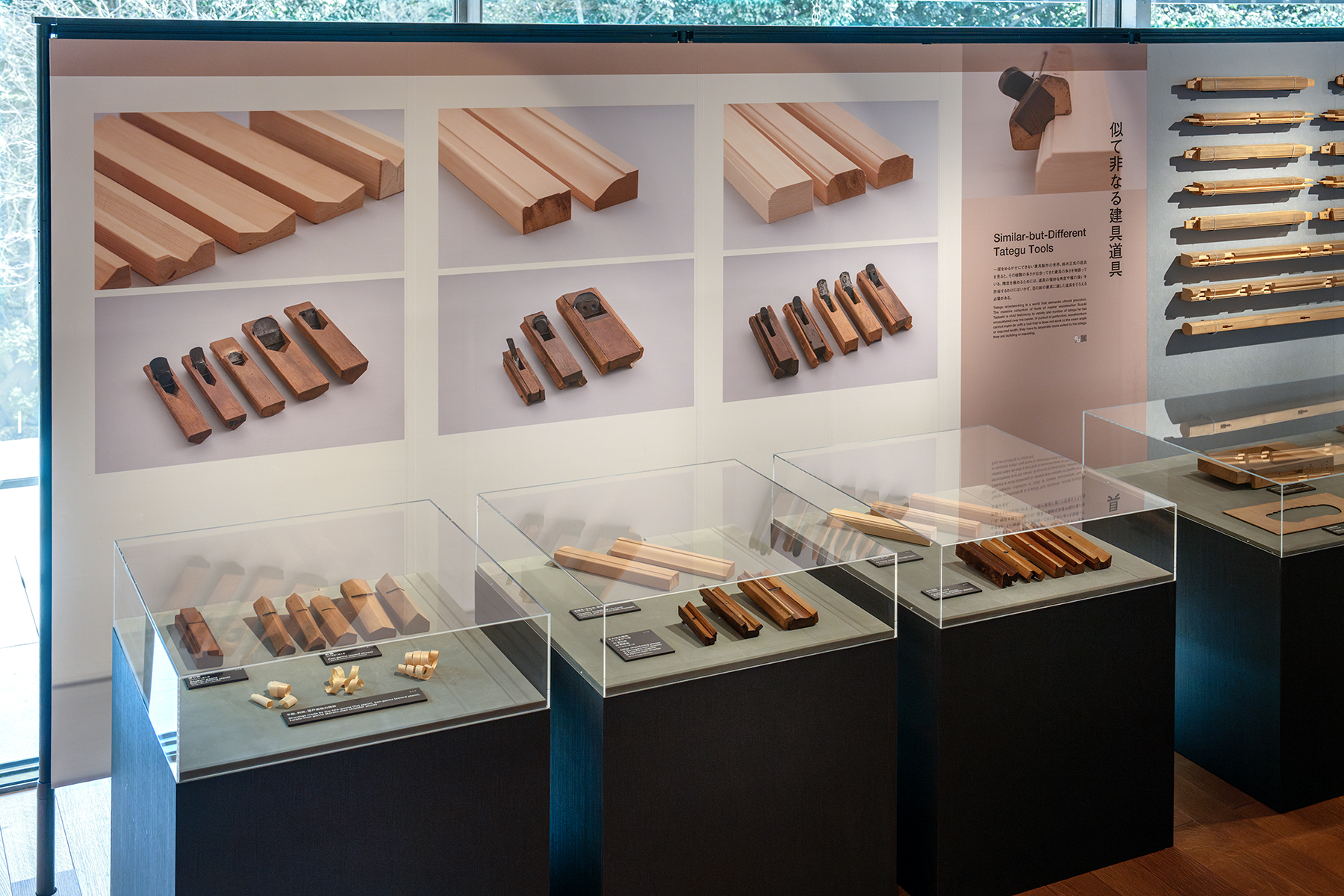 The plane of Mr. Tadashi Suzuki is on display. It is a world of fittings that does not allow slight errors, so it is a completely different tool even if it looks similar. |
|
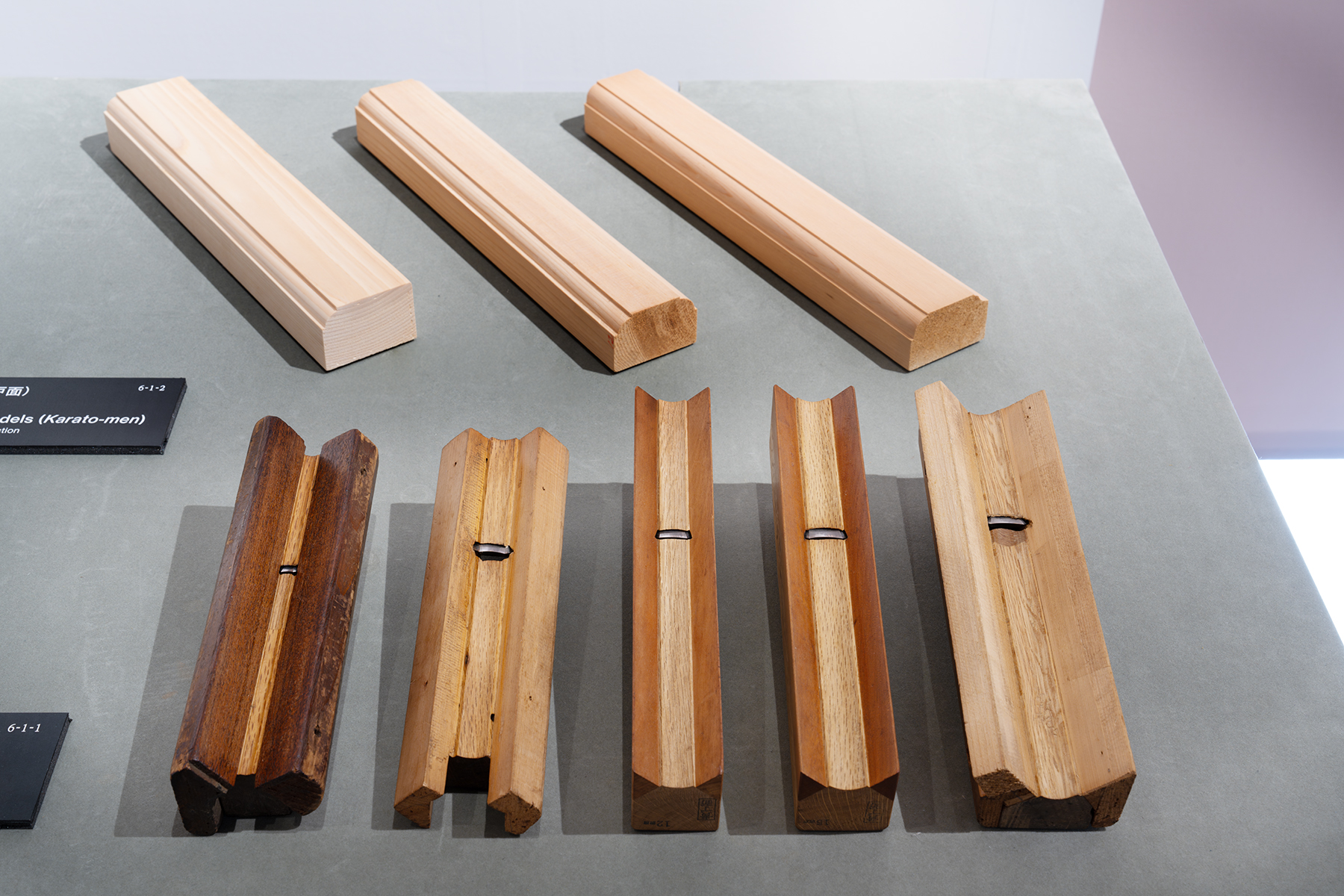 In particular, Domiya fittings can not have the same design or the same dimensions as ready-made products. It is also a feature of fittings that each time the site is repeated, it is made by itself, modified, and the number of types increases. |
|
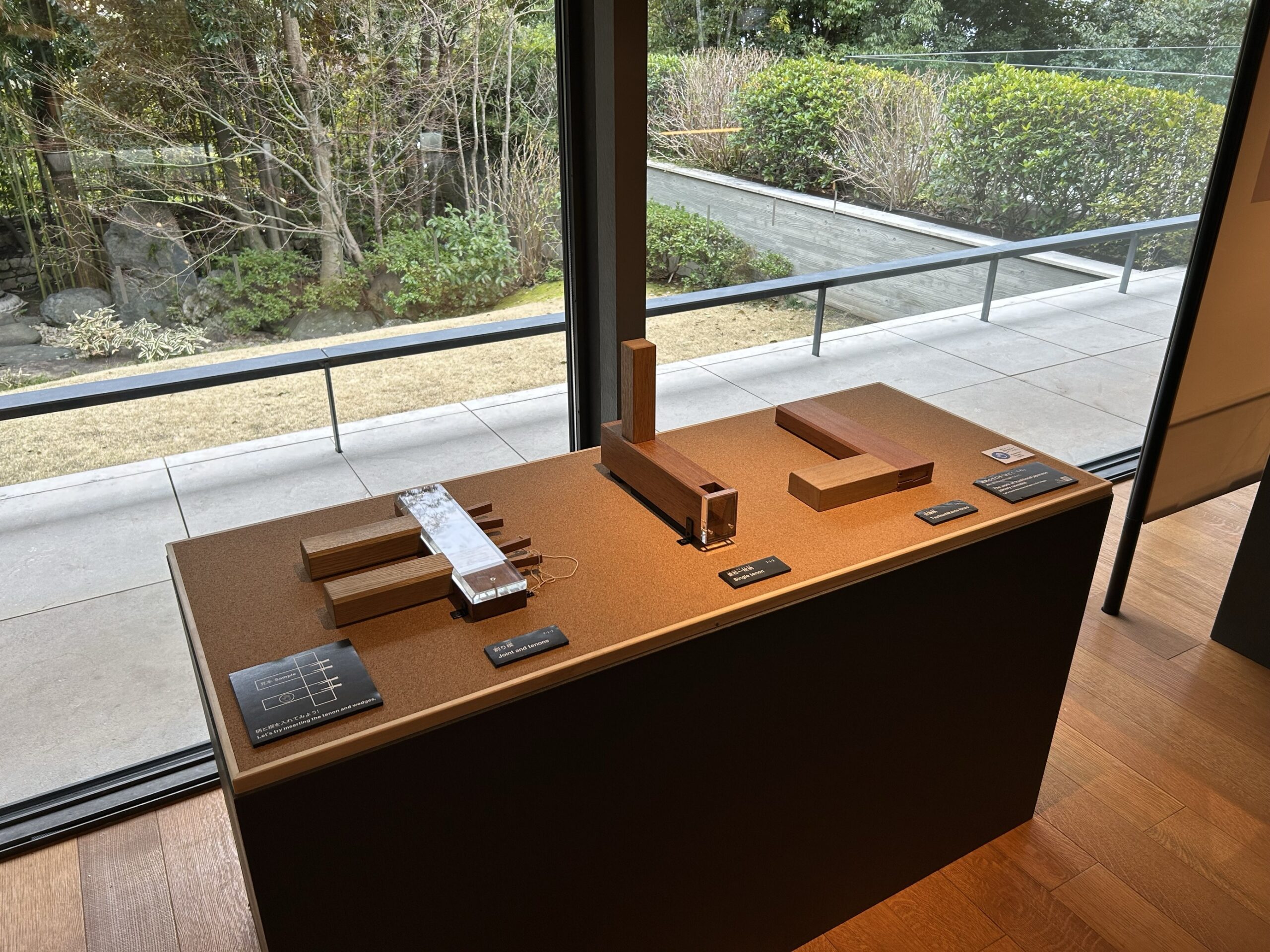 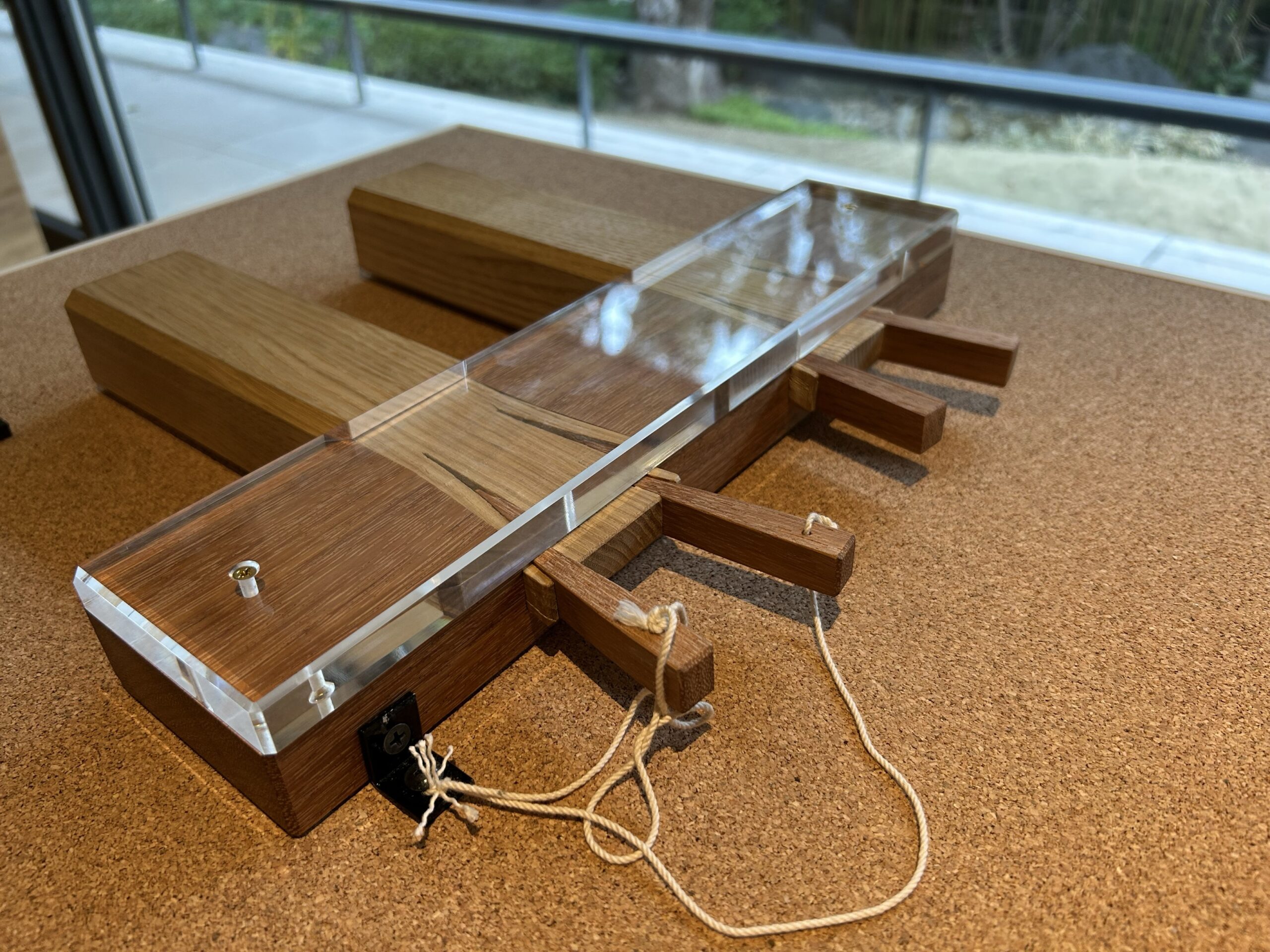 At the hands-on corner, you can actually touch the gesture model introduced during the exhibition. This time, we made a part of the model with acrylic. Check the appearance of the hozo hole in the hozo hole and the change in the shape of the hozo when hitting the wedge. |
|
| You can see short videos on the monitors installed at various places on display, and in the video corner on the second basement floor, you can see the techniques of Mairado at the important cultural property Koumein main hall on a large 60-inch screen. In addition, you can see photos and videos taken during the installation of this exhibition on official Instagram. Please take a look at the exhibition. ●Official Instagram is here. |
|
| <Video work> ・Important Cultural Property Koumein Hondo Mairado's technique (28 minutes|2022) ・Important Cultural Property Koumein Hondo Mairado technique (short version) (1 minute 55 seconds|2022) ・Repair of the National Treasure Honganji Mieido Shitomido (6 minutes 30 seconds|2009) ・Demolition of the pier Karato (1 minute 25 seconds|2025) ・Repair of shaft legs (1 minute 37 seconds|2025) ・Chamfering and temporary assembly (1 minute 25 seconds|2025) ・Processing and old color (1 minute 30 seconds|2025) |
|
| (Curator, Tomoo Funahashi) |